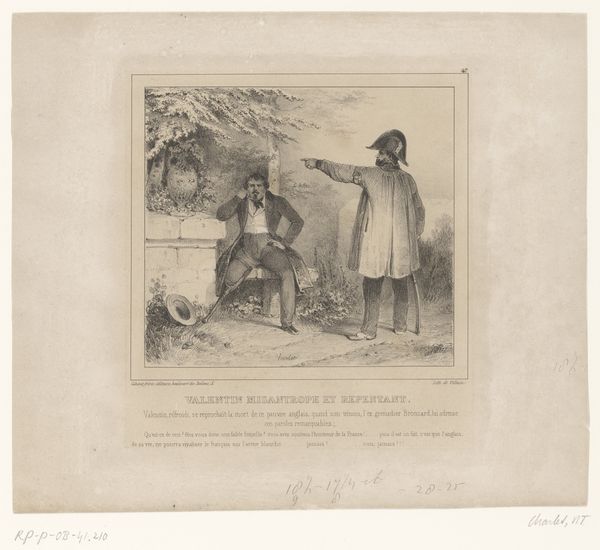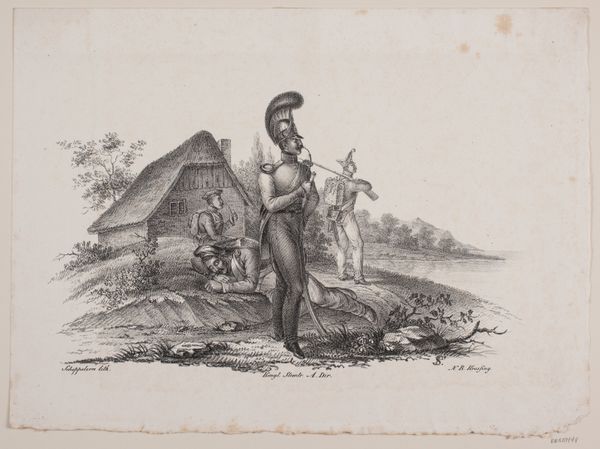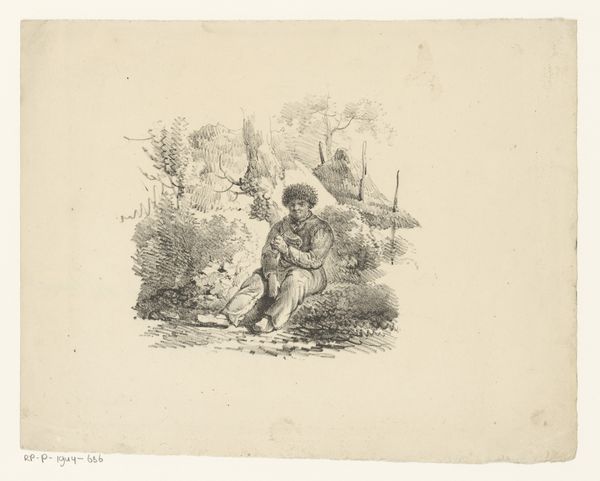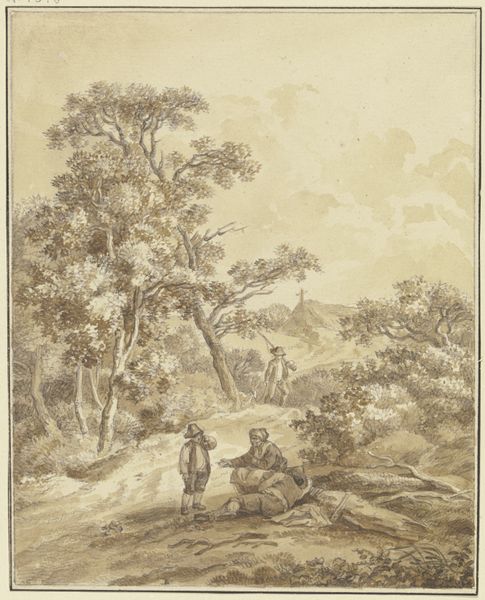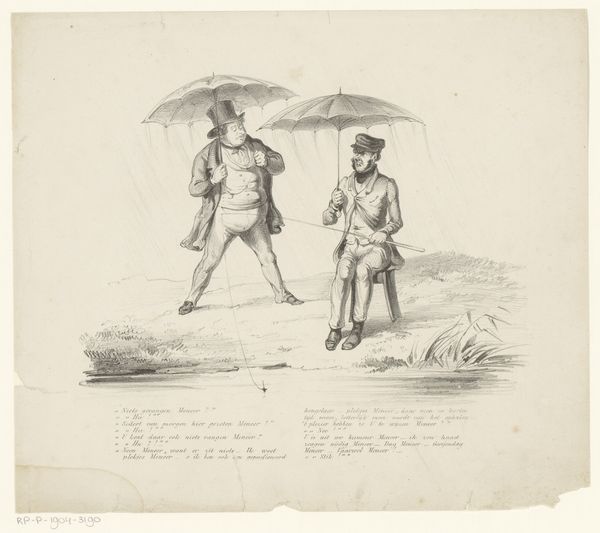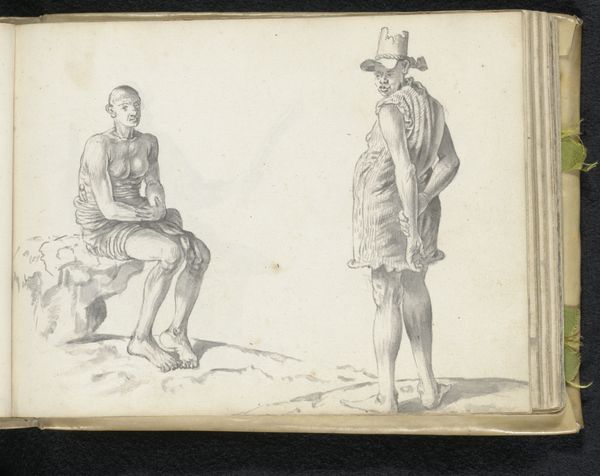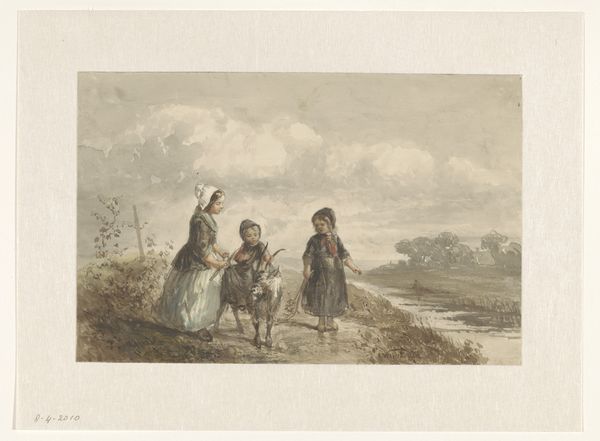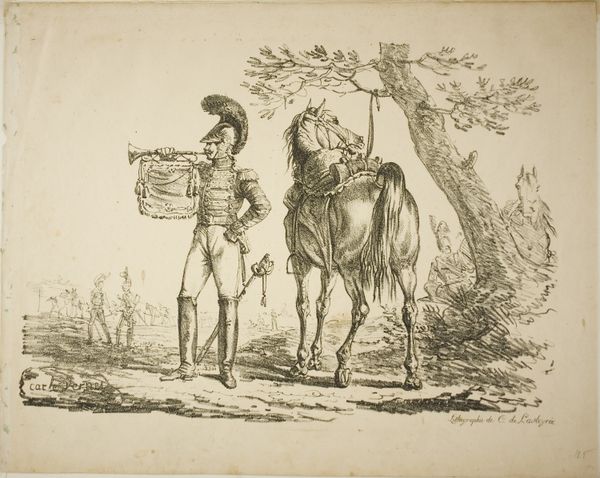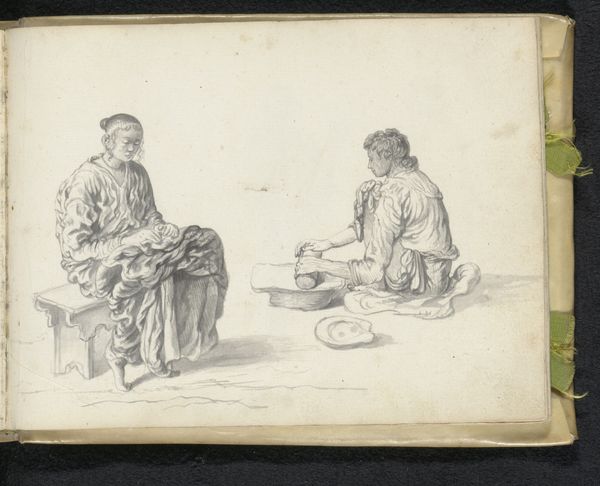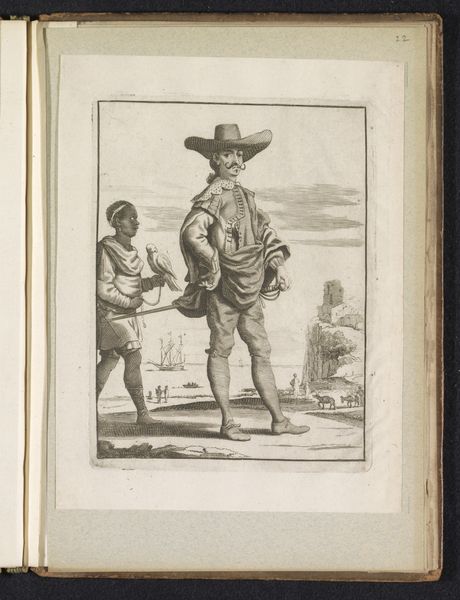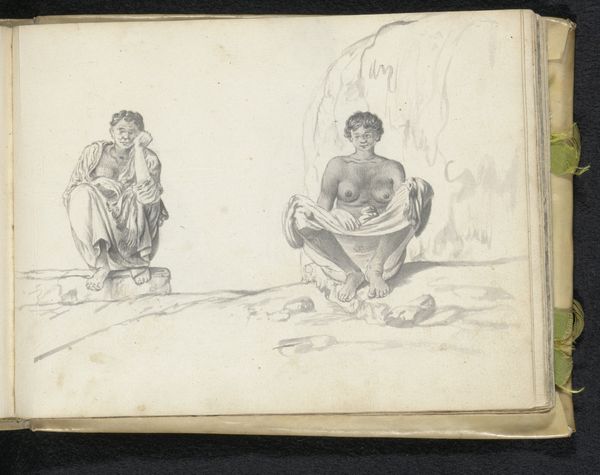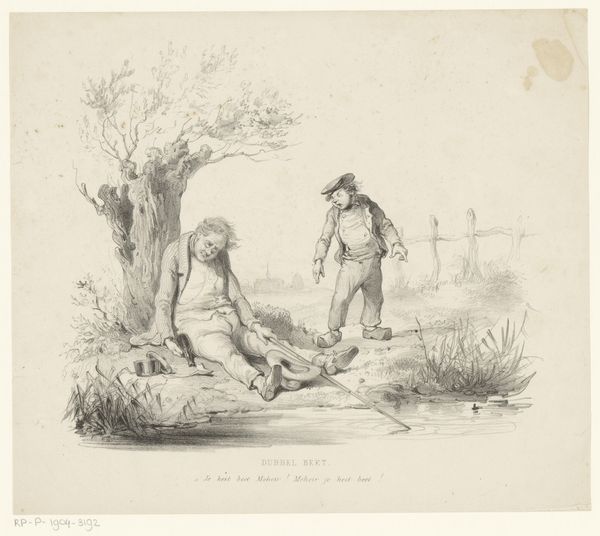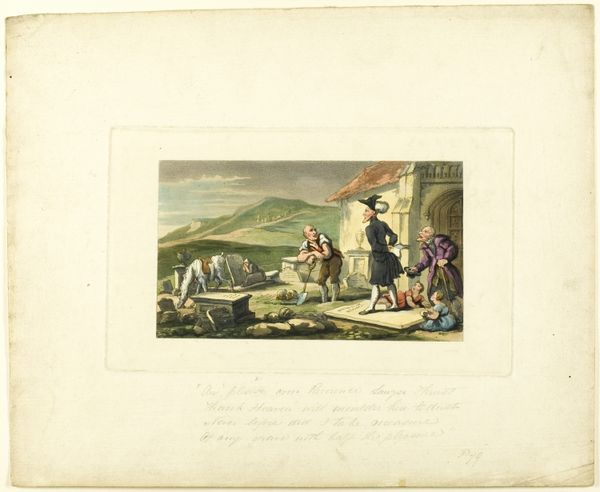
Dimensions: height 244 mm, width 392 mm
Copyright: Rijks Museum: Open Domain
Curator: Before us, we have "Man digging up a sword on an old battlefield," a watercolor, pencil, and colored pencil drawing by Alexander Ver Huell, likely created between 1854 and 1887. Editor: What strikes me immediately is the desaturated palette and how it emphasizes the somber mood of the scene, punctuated by the glint of the sword. The skeletal remains are so nonchalantly scattered—quite stark. Curator: Indeed, the muted tones—primarily earth browns, grays, and faint blues—establish a connection to both romanticism and the artist's use of layering. The figures and architectural details in the distance add depth and a rather interesting compositional counterpoint to the foreground's activity. Editor: Right, note how Ver Huell has structured it. The gaze is pulled into a triangular composition with the sword tip acting as the apex and the digging site as the base, visually echoing each other and intensifying the themes of discovery and mortality. Do you agree? Curator: Precisely. Beyond the formalism, it's crucial to recognize that battlefields became objects of historical reflection and even morbid fascination throughout the 19th century. Ver Huell is capturing the post-battle narrative, less concerned with valor and more with what war leaves behind: bones, relics, questions of legacy. The presence of what looks like peasants doing this job seems crucial, perhaps symbolic of labor in service of history itself. Editor: True. Consider how the artist contrasts the romantic gesture of unearthing the sword—an emblem of honor—with the brutal reality signified by the exposed bones, the toiling men, underscoring the disillusionment that began seeping into the portrayal of warfare during this period. The building visible in the distance may act to juxtapose the peaceful life against the violence and death within the burial grounds. Curator: The loose style with which the building and castle is illustrated may speak to themes in memory itself and question what of life we truly bring from life and death in warfare. Thank you for helping me to read so deeply into the artwork. Editor: The pleasure was all mine; its complexities speak to the power inherent to even a seemingly simple rendering.
Comments
No comments
Be the first to comment and join the conversation on the ultimate creative platform.
